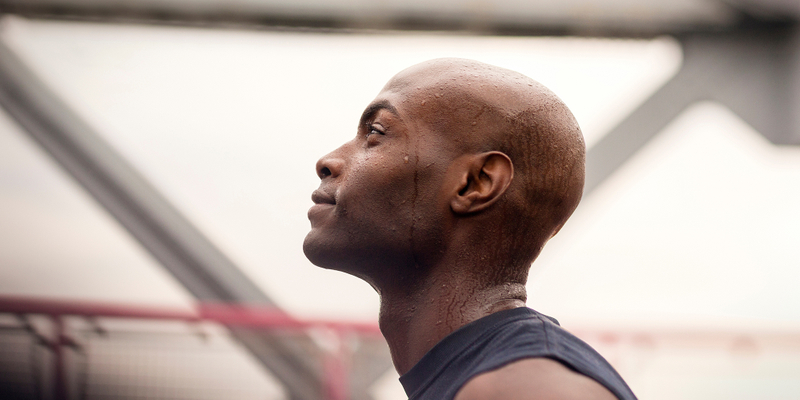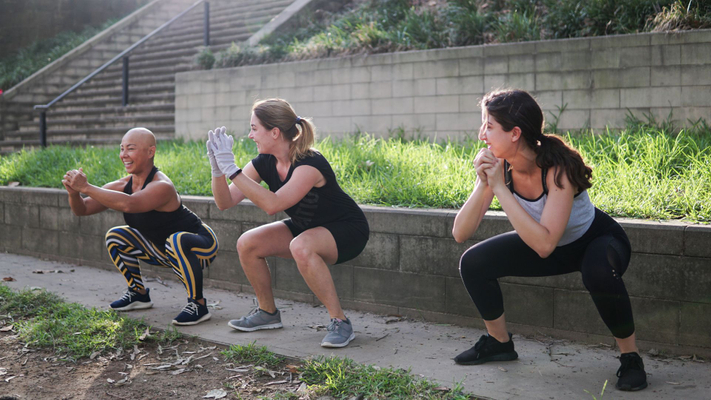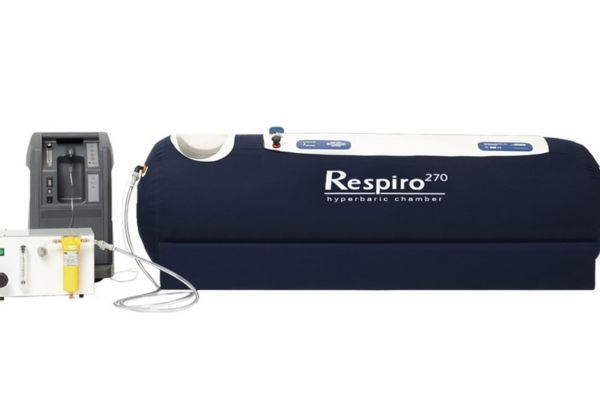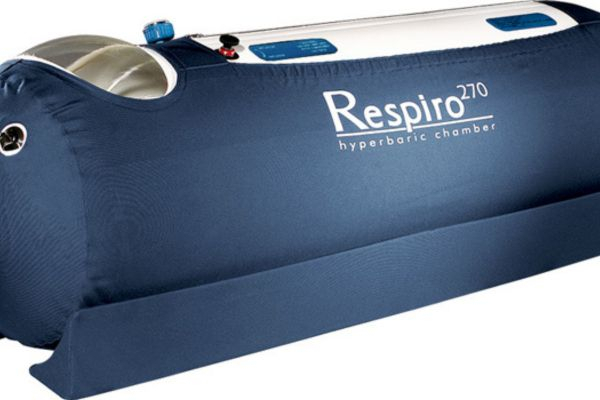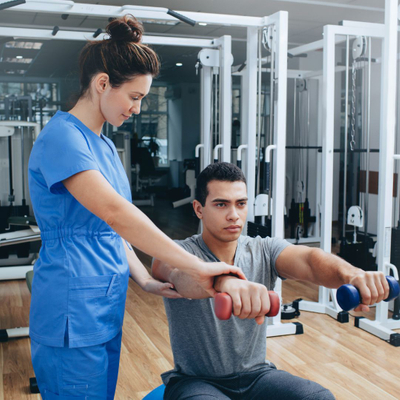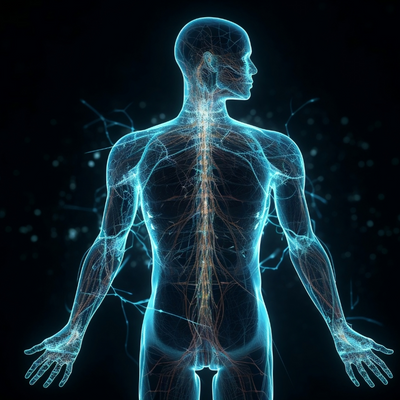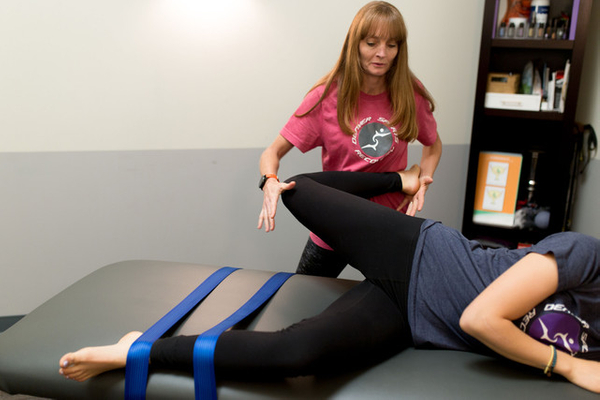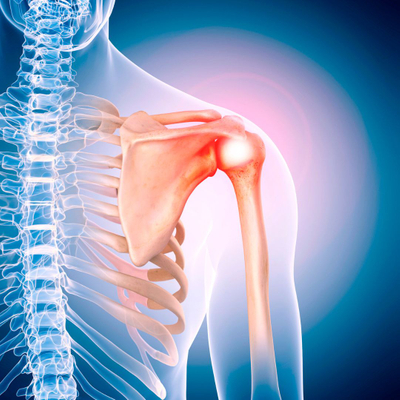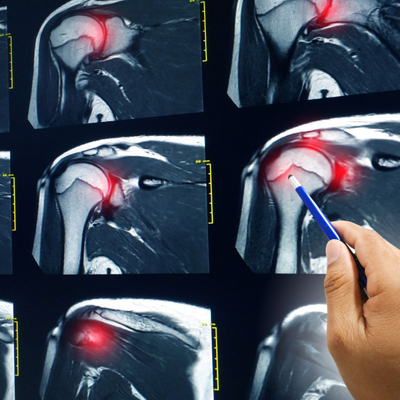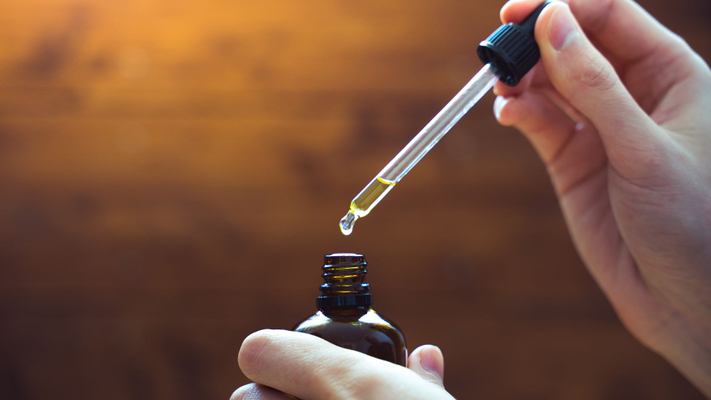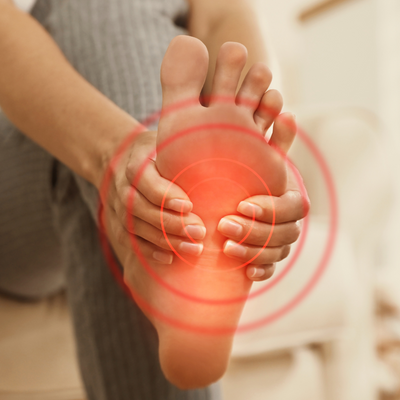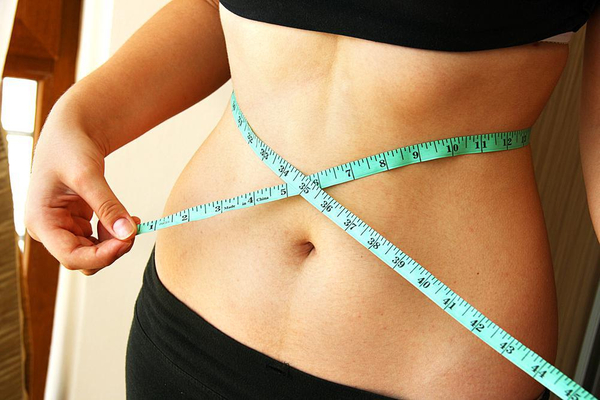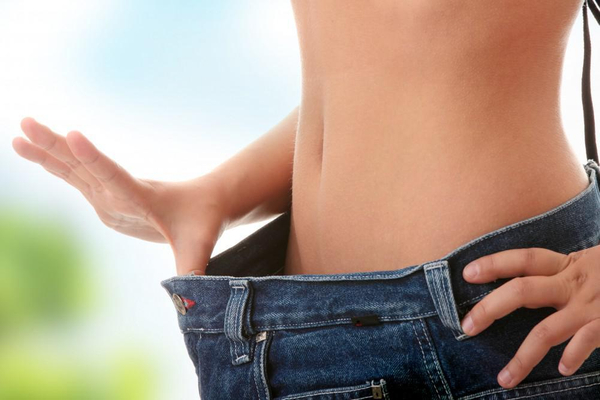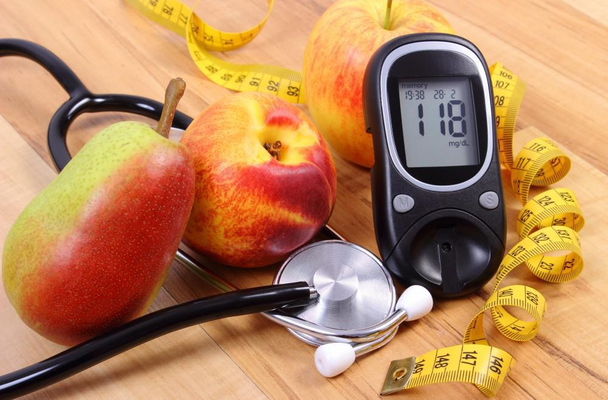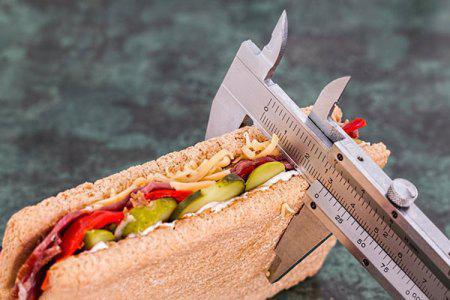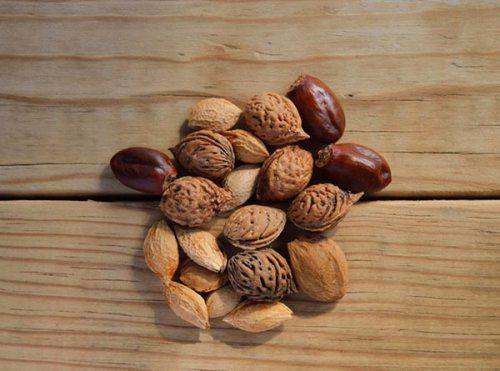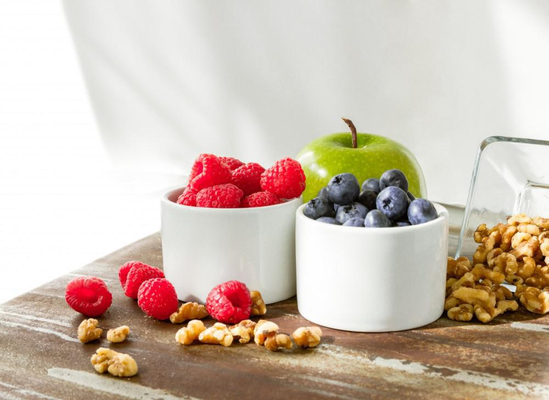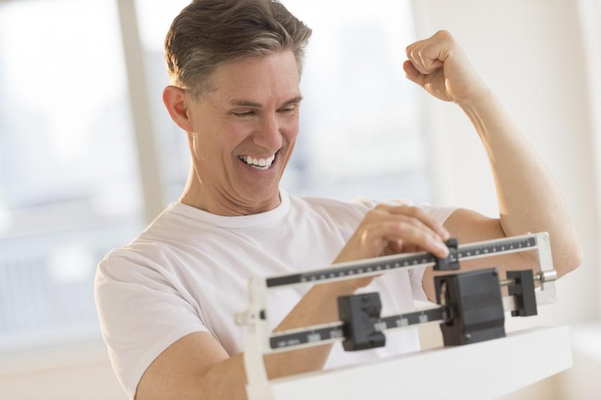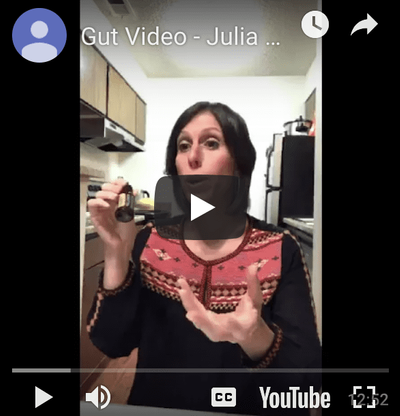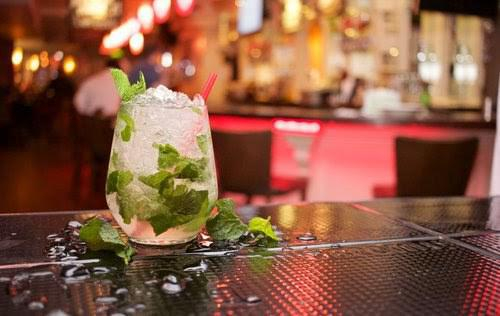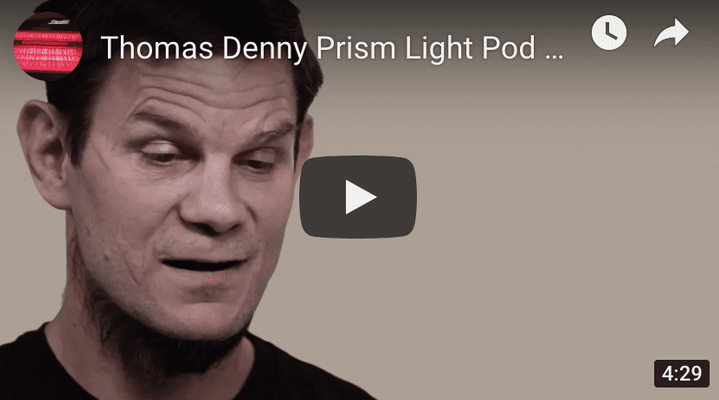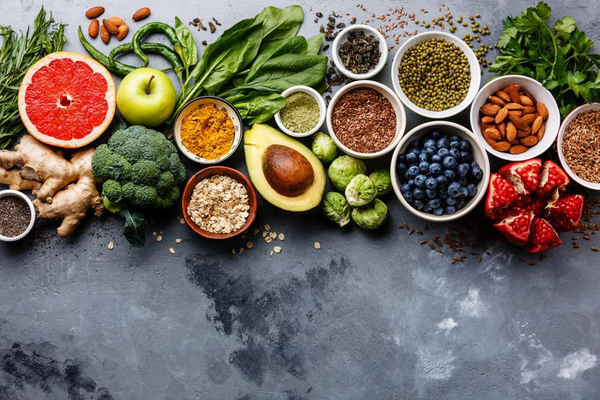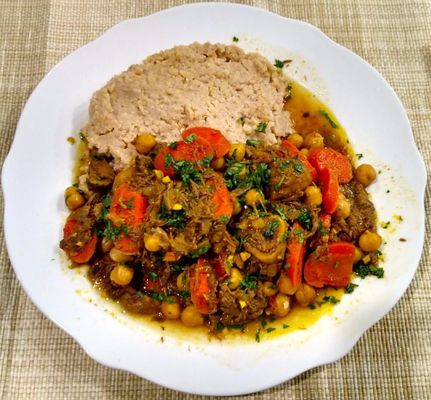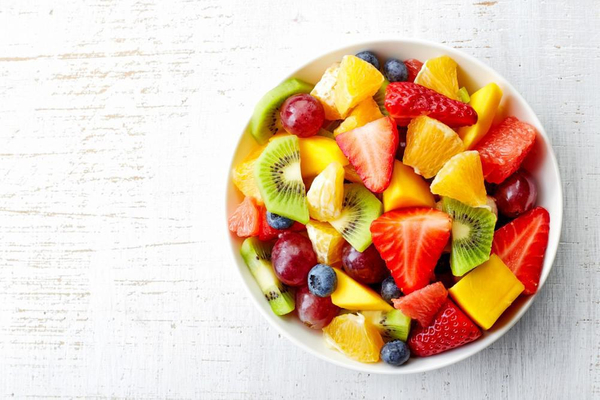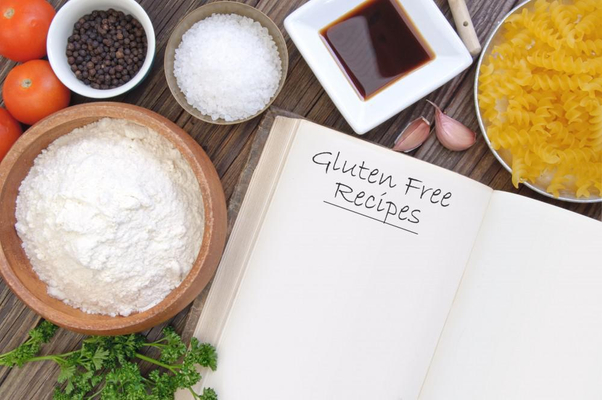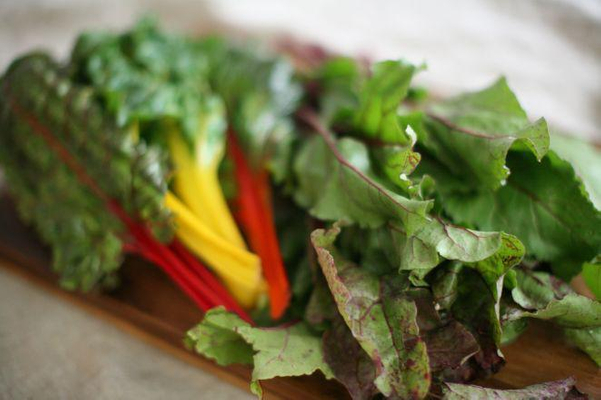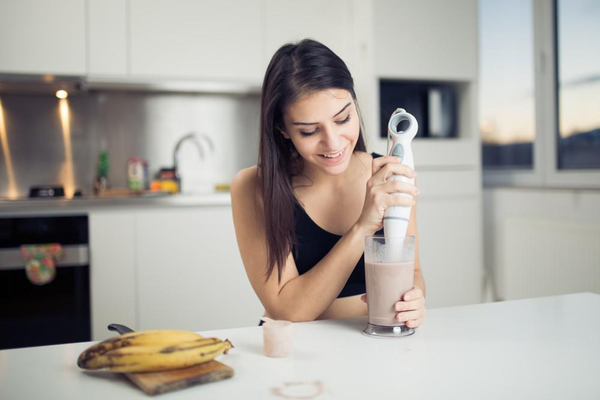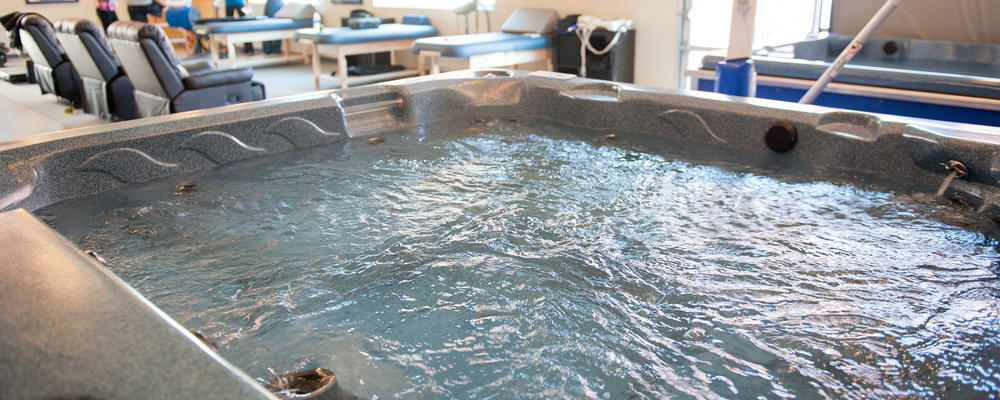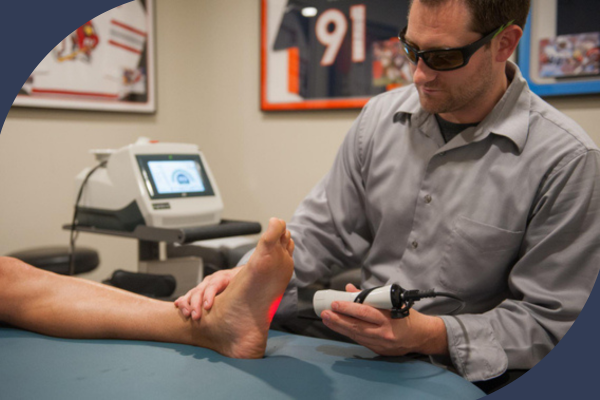Blog
Health Benefits of Infrared Sauna
Health Benefits of Infrared Sauna (Backed by Research)
Infrared saunas use infrared light to heat the body directly, rather than heating the air like traditional saunas. This allows for sweating and therapeutic effects at lower temperatures (120–150°F or 49–65°C). Research suggests several health benefits:
1. Cardiovascular Health
Infrared sauna therapy can improve heart health by promoting better circulation and reducing blood pressure. A study in JAMA Internal Medicine (2015) found that frequent sauna use (4–7 times per week) was associated with a 50% lower risk of fatal heart disease. Infrared therapy specifically enhances blood vessel function, reducing stiffness and improving oxygen delivery.
A 2016 study in The Journal of Complementary and Alternative Medicine reported that infrared sauna sessions lowered blood pressure in hypertensive patients after three months of regular use.
2. Pain Relief & Muscle Recovery
Infrared heat penetrates deeper into tissues (1.5 inches), improving blood circulation and reducing inflammation. A 2009 study in Clinical Rheumatology found that infrared sauna therapy reduced pain and stiffness in fibromyalgia patients.
moreDry saunas
Dry saunas, typically heated between 150–195°F (65–90°C), offer several health benefits supported by research. Here are some key advantages:
1. Cardiovascular Health
Regular sauna use has been linked to improved heart health. A 2015 study in JAMA Internal Medicine followed over 2,000 Finnish men for 20 years and found that frequent sauna use (4–7 times per week) was associated with a 50% lower risk of fatal heart disease compared to those who used it once a week. The heat exposure improves circulation, reduces blood pressure, and enhances vascular function.
2. Reduced Risk of Stroke
A study in Neurology (2018) found that regular sauna users had a 60% lower risk of stroke. The heat helps widen blood vessels, improving circulation and reducing clot formation.
3. Muscle Recovery & Pain Relief
Heat exposure increases blood flow to muscles, reducing soreness and promoting faster recovery. A 2019 review in Evidence-Based Complementary and Alternative Medicine showed that saunas can help with chronic pain conditions, such as arthritis and fibromyalgia, by reducing inflammation and stiffness.
moreSauna Time Reccomendations
The time you can safely spend in a sauna depends on factors like your health, hydration, and heat tolerance. Here’s what research suggests:
Dry Sauna (Traditional Finnish Sauna)
- Recommended Duration: 5–20 minutes per session
- Max Duration: Up to 30 minutes if you are experienced and well-hydrated
- Temperature Range: 160–200°F (70–93°C)
- Frequency: Daily use is generally safe for healthy individuals. A Finnish study found that using a sauna 4–7 times per week was associated with reduced cardiovascular disease risk. However, hydration and cooling down between sessions are essential.
Infrared Sauna
- Recommended Duration: 15–30 minutes per session
- Max Duration: Up to 45 minutes for experienced users
- Temperature Range: 110–150°F (43–65°C)
- Frequency: Safe for daily use. Infrared saunas operate at lower temperatures, allowing longer sessions without excessive cardiovascular strain. Some research suggests daily use may help with muscle recovery, circulation, and relaxation.
What Science Says About Sweating and Detoxification
The idea that saunas help sweat out toxins is a common belief, but the reality is more nuanced.
What Science Says About Sweating and Detoxification
Sweat is mostly water (99%) with small amounts of salt, urea, and trace minerals. While some toxins (like heavy metals and BPA) have been detected in sweat, the amounts are minimal.
The liver and kidneys are the body's primary detoxification organs. They process and eliminate toxins through urine and feces, not sweat.
A 2012 review in Environmental International found that sweating can help excrete small amounts of heavy metals (like arsenic, lead, and mercury), but it's not a primary detox method.
A 2022 study in Toxins concluded that while sweat contains some environmental pollutants, the contribution to overall detoxification is minor compared to the liver and kidneys.
What Saunas Actually Do
Support circulation and lymphatic flow, which may help the body transport waste products more efficiently.
Promote relaxation and stress reduction, which can indirectly support metabolic processes, including detoxification.
Aid in muscle recovery and cardiovascular health, but not necessarily by sweating out toxins.
moreWhat is Blood Flow Restriction?
Blood Flow Restriction (BFR) training is a technique that involves applying a tourniquet-like device to a limb to restrict venous return (the flow of blood back to the heart) while still allowing arterial inflow. This partial restriction of blood flow causes metabolic changes within the muscle, leading to a range of physiological responses.
Mechanism of Action:
BFR works by limiting venous return without fully occluding arterial blood flow. This creates a hypoxic (low oxygen) environment in the muscle, which increases the accumulation of metabolites such as lactate. This metabolic stress is thought to be one of the main mechanisms by which BFR incudes muscle growt5h and strength, even with low intensity exercise.
Physiological Responses:
Muscle Fatigue and Hypertrophy: With BFR, muscles fatigue more quickly due to the buildup of metabolites. The increased fatigue signals the body to adapt by increasing muscle mass and strength. Studies have shown that low-intensity training with BFR can result in similar muscle hypertrophy and strength gains as much as traditional high-intensity training. For example, a study by Karabulut et al. (2010) found that low load-resistance exercise combined with FBR led to similar hypertrophic effects as high-load resistance exercise.
more
What condition does blood flow restriction help?
Blood flow restriction CGR training is a technique that involves applying a controlled amount of pressure to a limb, typically using a band or cuff, to partially restrict blood flow during exercise. This method has been shown to be effective in helping with various conditions and purposes, including,
Muscle Atrophy: BFR is often used to help prevent or treat muscle atrophy (muscle wasting) in individuals who are unable to perform high intensity exercises due to injury, surgery, or other conditions. By mimicking the effects of high-intensity training with lower resistance, BFR helps stimulate muscle growth and strength in people who can’t engage in heavy lifting.
Rehabilitation After Surgery or Injury: BFR is commonly used in rehabilitation settings to help individuals recover from surgery or injuries (such as ACT reconstruction or fractures) without putting too much strain on healing tissues. It allows for the activation of muscle growth and strength despite using lighter weights or lower-intensity exercises.
Chronic Pain Management: Some research suggests BFR may help individuals with chronic pain conditions, like osteoarthritis, by promoting muscle strengthening and reducing joint stress., which can help alleviate pain and improve mobility.
more
What is the Physiology and Science around HBOT and the tissue it effects?
Hyperbaric oxygen therapy (HBOT) involves breathing pure oxygen in a pressurized room or soft-shell chamber. This increased pressure allows oxygen to dissolve into the bloodstream at much higher concentrations than usual, which can have significant physiological effects on the body, particularly on tissues. Below is a breakdown of the science behind HBOT and its impact on various tissues:
Increased Oxygen Delivery to Tissues
Mechanism: Under normal atmospheric pressure, oxygen is primarily carried by red blood cells (RBCs) through hemoglobin. However, at elevated pressures (typically 2-3 atmospheres), oxygen dissolves directly into the plasma (the liquid portion of blood) in much greater concentrations. This allows more oxygen to reach tissues, including those where blood flow may be impaired (e.g., injured or poorly perfused tissues).
Impact: The increased oxygen supply enhances cellular metabolism and promotes healing in hypoxic (oxygen-starved) tissues. This is crucial for repairing damage caused by injuries, infections, or certain diseases.
Improved Healing and Tissue Repair
Enhanced Collagen Syntheses: Oxygen is critical for collagen production, which is essential for wound healing. HBOT has been shown to stimulate fibroblasts (cells that produce collagen) and increase collagen synthesis, speaking up wound closure and recovery from burns, diabetic ulcers, and surgical wounds.
more
How Does Hyperbaric Chamber Work
A hyperbaric chamber is a sealed, pressurized environment in which a person breathes 100% pure oxygen at higher-than-normal atmospheric pressure. The basic principle behind its functioning is to increase the amount of oxygen dissolved in the bloodstream, which enhances the body’s ability to heal, fight infection, and support various biological functions.
Here’s how it works:
Increased Atmospheric Pressure: A hyperbaric chamber is pressurized to levels higher than normal atmospheric pressure (typically 1.5 to 3 times the normal pressure at sea level). The increased pressure allows the lungs to take in more oxygen than at normal atmospheric pressure.
Breathing 100% Oxygen: While inside the chamber, the person breathes in 100% oxygen, rather than the usual 21% found in the air we breathe. This enables more oxygen to dissolve in the blood plasma, allowing oxygen to reach tissues and organs that might otherwise be deprived due to injury or disease.
Oxygen Transport: Under normal circumstances, oxygen is carried by red blood cells. However, when you breathe pure oxygen in a hyperbaric chamber, oxygen dissolves directly into the plasma (the liquid component of blood) and can be transported throughout the body, even to areas where blood flow is limited or blocked.
more
Unlocking the Benefits of NAD+ Supplementation Across Diverse Health Needs
NAD+ (Nicotinamide Adenine Dinucleotide) offers benefits to a wide range of individuals, especially those aiming to enhance their overall health, energy levels, and potentially extend their lifespan. Specific groups who may benefit from NAD+ supplementation include:
1. Aging Individuals:
- NAD+ levels naturally decrease with age, impacting cellular function and energy production. Supplementing with NAD+ precursors can help counteract effects of aging like fatigue, cognitive decline, and reduced metabolic efficiency.
Reference: Verdin, E. (2015). "NAD+ in aging, metabolism, and neurodegeneration." Science, 350(6265), 1208-1213.
2. Individuals with Metabolic Disorders:
- Those with metabolic conditions like obesity, diabetes, and insulin resistance can benefit from NAD+ as it improves metabolic processes and enhances insulin sensitivity.
Reference: Yoshino, J., et al. (2011). "Nicotinamide mononucleotide, a key NAD(+) intermediate, treats the pathophysiology of diet- and age-induced diabetes in mice." Cell Metabolism, 14(4), 528-536.
3. Athletes and Physically Active Individuals:
- NAD+ supports muscle function and recovery by aiding mitochondrial health and energy production, leading to enhanced physical performance and reduced recovery times post-exercise.
moreAdministering NAD+
Administering NAD+ can be done through several methods, each with its own benefits and considerations. Below are the primary ways to administer NAD+:
1. Oral Supplements:
- Nicotinamide Riboside (NR) and Nicotinamide Mononucleotide (NMN): These are precursors to NAD+ that can be taken in pill form. Once ingested, they are converted into NAD+ within the body.
Pros: Easy to use and widely available.
Cons: Bioavailability may be limited, requiring higher doses for significant effects.
References:
- Trammell, S. A. J., & Brenner, C. (2013). "Nicotinamide riboside and nicotinic acid: discoveries in vitamin B3 biochemistry." The Journal of Biological Chemistry, 288(44), 33064-33071.
2. Intravenous (IV) Therapy:
- Direct infusion of NAD+ into the bloodstream.
Pros: Immediate and higher bioavailability.
Cons: Requires medical supervision, can be costly and time-consuming.
References:
- Grant, R., & Berg, J. (2021). "Intravenous NAD+: A Review of the Benefits and Risks." Journal of Medical Research and Health Sciences, 4(12).
3. Transdermal Patches:
- Patches applied to the skin for sustained release of NAD+.
moreUnveiling the Power of NAD+ for Health and Longevity
Nicotinamide adenine dinucleotide (NAD+) is a coenzyme found in all living cells, playing a pivotal role in cellular energy production and metabolism. Research has shown that NAD+ levels naturally decline with age, leading to reduced cellular function and increased susceptibility to age-related diseases. The benefits of maintaining or boosting NAD+ levels are gaining attention due to their potential impact on health and longevity.
1. Cellular Energy Production: NAD+ is crucial for the function of mitochondria, the powerhouses of cells, which convert nutrients into adenosine triphosphate (ATP), the primary energy currency of the cell. Higher NAD+ levels enhance mitochondrial efficiency, improving energy production and reducing fatigue (Verdin, 2015).
2. DNA Repair: NAD+ is essential for the activation of sirtuins and PARPS, proteins involved in DNA repair. Enhanced DNA repair mechanisms can mitigate the damage caused by oxidative stress and environmental factors, potentially reducing the risk of cancer and other genetic disorders (Giblin et al., 2014).
3. Longevity: Sirtuins, often called "longevity genes," are activated by NAD+. These proteins regulate cellular health, promote stress resistance, and support metabolic efficiency. Research suggests that increasing NAD+ levels can mimic the effects of calorie restriction, a well-known method to extend lifespan in various organisms (Imai & Guarente, 2014).
moreUnveiling the Significance of NAD+: A Journey of Discovery and Innovation
The discovery of NAD+ (Nicotinamide Adenine Dinucleotide) is rooted in early 20th-century biochemistry research. Here is a detailed account of its discovery and the subsequent understanding of its significance:
1. Initial Discovery:
- 1906: British biochemists Arthur Harden and William John Young were studying fermentation, particularly the alcoholic fermentation of sugars by yeast extracts. They observed that adding boiled and filtered yeast extracts to an active yeast culture stimulated fermentation. This led them to speculate that some unknown factor was being transferred, enhancing the fermentation process.
- 1906: Through their experiments, Harden and Young discovered that this unknown factor was a coenzyme present in the yeast extract, which they initially referred to as a "coferment."
2. Identification of the Active Component:
- 1930s: German-American biochemist Otto Warburg, building on Harden and Young's work, identified the chemical nature of this coenzyme. Warburg found that this coenzyme was essential for the oxidation-reduction reactions in cells, which are critical for cellular respiration and energy production.
3. Chemical Structure Elucidation:
moreUnleashing the Power of Body Tempering for Enhanced Muscle Recovery and Performance
Body tempering is a form of myofascial release that involves using heavy, cylindrical weights, often called body tempering rollers, to apply pressure to muscles and connective tissues. Developed by powerlifting coach Donnie Thompson, body tempering aims to enhance muscle recovery, increase mobility, and reduce pain and tightness. Here are the key benefits of body tempering, supported by references:
Benefits of Body Tempering
1. Enhanced Muscle Recovery:
- Body tempering can accelerate muscle recovery by promoting blood flow and nutrient delivery to the affected areas. The deep pressure applied helps to flush out metabolic waste products that accumulate during intense exercise.
Reference: Meeusen, R., & Lievens, P. (1986). "The use of cryotherapy in sports injuries." Sports Medicine, 3(6), 398-414. While this study focuses on cryotherapy, it highlights the importance of blood flow in muscle recovery, which is also relevant to body tempering.
2. Increased Mobility and Flexibility:
- The pressure from body tempering helps to release tight fascia and muscle knots, leading to improved range of motion and flexibility. This is particularly beneficial for athletes who require high levels of mobility for performance.
moreRevolutionize Your Wellness: The Ultimate Guide to Biohacking for Peak Physical and Mental Performance
iohacking, the practice of using science, technology, and lifestyle modifications to enhance physical and mental performance, has gained popularity in recent years. Here are some of the top biohacking modalities utilized by enthusiasts and experts alike:
1. Nutritional Biohacking:
- Intermittent Fasting: Cycling between periods of eating and fasting to improve metabolism, increase longevity, and boost cognitive function.
- Ketogenic Diet: High-fat, low-carbohydrate diet that induces ketosis, a state where the body uses fat for fuel, which can enhance mental clarity and energy levels.
- Supplements: Use of vitamins, minerals, and other supplements like nootropics (e.g., Omega-3s, Vitamin D, creatine, caffeine) to optimize brain function and overall health.
2. Sleep Optimization:
- Sleep Tracking: Using devices and apps to monitor sleep patterns and quality, allowing for adjustments to improve rest.
- Blue Light Blocking: Wearing blue light-blocking glasses or using screen filters in the evening to reduce the impact of blue light on melatonin production and sleep quality.
- Sleep Environment: Enhancing the sleep environment by using blackout curtains, white noise machines, and maintaining a cool room temperature.
moreUnlock Your Body's Potential with Fascial Stretch Therapy: A Deep Dive into Improved Flexibility, Pain Reduction, and Enhanced Well-being
Fascial Stretch Therapy (FST) is a unique system of assisted stretching focused on the fascia, the connective tissue that surrounds muscles, bones, and joints. Developed by Ann Frederick and Chris Frederick, FST aims to improve flexibility, strength, and overall well- being by targeting the fascial network rather than just isolated muscle groups.
Key Concepts of FST
1. **Fascia**: Fascia is a continuous web of connective tissue that encases muscles, organs, and structures within the body. It plays a critical role in movement, stability, and overall function. Tight or restricted fascia can lead to pain, reduced mobility, and compromised performance.
2. **Assisted Stretching**: In FST, a trained therapist performs stretches on a client, using techniques that involve gentle traction and movement across multiple planes. This approach helps to release restrictions in the fascial network more effectively than traditional static stretching.
3. **Pain-Free Stretching**: FST focuses on pain-free stretching, which means that the stretches are designed to stay within a comfortable range of motion. This encourages relaxation and allows the fascia to release without triggering the body's protective mechanisms that can cause further tightness.
moreThrowing athletes
Overhead-throwing athletes, such as baseball and softball players, put a lot of strain on their shoulders, and therefore, they need to engage in exercises that can help prevent injury and improve performance. At the Denver Sports Recovery, we have complied some of the best exercises for overhead throwing athletes, based on scientific research:
1. Shoulder rotator cuff strengthening exercises: The rotator cuff is a group of muscles and tendons that stabilize the shoulder joint. Strengthening the rotator cuff can help prevent shoulder injuries in overhead throwing athletes. Examples of rotator cuff strengthening exercises include external and internal rotations with a resistance band.
2. Scapular stabilization exercises: The scapula (shoulder blade) plays a crucial role in overhead throwing. Strengthening the scapular stabilizing muscles can help prevent shoulder injuries and improve performance. Examples of scapular stabilizing exercises include the prone T raises and the wall slides.
3. Plyometric exercises: Plyometric exercises are high-intensity, explosive movements that can improve power and speed in overhead throwing athletes. Examples of plyometric exercises for overhead throwers include medicine ball throws and plyometric push-ups.
moreShoulder Labrum Tear
Welcome to Denver Sports Recovery, your ultimate destination for sports recovery solutions. If you've experienced a labrum tear, you've come to the right place. A torn labrum is a common injury among athletes, particularly in high-impact sports such as football, basketball, and baseball. However, with our specialized physical therapy services, we can help you on your journey to healing and getting back in the game.
moreTorn Biceps
A torn biceps tendon is a condition in which the tendon that connects the biceps muscle to the shoulder joint is damaged. The biceps muscle is responsible for bending the arm at the elbow and rotating the arm at the shoulder, and the tendon helps to transmit the force generated by the muscle to the shoulder joint. In this blog, Denver Sports Recovery will go over some of the symptoms of a torn bicep.
A torn biceps tendon can occur as a result of a traumatic injury, such as a fall or a direct blow to the arm, or as a result of repetitive overuse, such as lifting heavy objects. The symptoms of a torn biceps tendon can include arm pain, weakness, and a bulge or deformity in the upper arm near the shoulder.
Diagnosis of a torn biceps tendon is typically made through a combination of clinical examination, imaging studies (such as MRI or ultrasound), and sometimes arthroscopy. Treatment of a torn biceps tendon can vary, depending on the extent of the tear and the patient's symptoms and goals.
Nonsurgical treatments, such as physical therapy and nonsteroidal anti-inflammatory medications, may be effective for some patients with mild to moderate symptoms. In more severe cases, surgical intervention may be necessary to repair the torn tendon and restore function to the arm.
moreRotator Cuff
The rotator cuff is a group of four muscles and tendons that attach the shoulder blade to the upper arm bone. Injuries to the rotator cuff, such as tears or strains, can cause pain and weakness in the shoulder and can limit arm movement. Rehabilitation exercises are an important part of the recovery process for rotator cuff injuries and can help to restore strength, flexibility, and function to the shoulder. Denver Sports Recovery is here to help and go over some simple exercises following an injury.
The following are some common rehabilitation exercises that may be used for rotator cuff injuries:
1. Isometric exercises: These exercises involve contracting the muscle without moving the joint, which can help to strengthen the rotator cuff muscles without causing additional strain on the injury. For example, a person with a rotator cuff injury may use an elastic band to perform isometric shoulder rotations.
2. Pendulum exercises: These exercises involve hanging the arm down and allowing it to move in a circular motion, which can help to improve range of motion and reduce pain in the shoulder. For example, a person with a rotator cuff injury may perform pendulum swings by holding onto a stable object and swinging their arm back and forth.
moreCold Plunge Therapy
Cold plunge therapy, also known as cryotherapy, has gained popularity in recent years for its potential benefits to physical and mental health. Cryotherapy involves exposing the body to extremely cold temperatures for a short period of time, typically in a special chamber or through the use of ice packs. In this blog, Denver Sports Recover will go over some of the benefits that research has shown for cold plunge therapy:
1. Pain management: Cryotherapy has been shown to reduce pain and inflammation in individuals with various conditions such as arthritis, fibromyalgia, and muscle pain. A study published in the European Journal of Applied Physiology found that cryotherapy reduced pain and improved functional ability in patients with knee osteoarthritis (Banfi, Giuseppe, et al. "The effects of whole-body cryotherapy on pain, function, and quality of life in patients with knee osteoarthritis.").
2. Improved athletic performance: Cryotherapy has been shown to improve athletic performance by reducing muscle soreness and promoting faster recovery from exercise-related injury. A study published in the Journal of Strength and Conditioning Research found that cryotherapy improved athletic performance and reduced muscle damage in elite soccer players (Garrido, Nuno, et al. "The effects of whole-body cryotherapy on athletic performance and muscle damage.").
moreCupping
Welcome to the world of cupping therapy at Denver Sports Recovery! If you're an active individual or an avid sports enthusiast seeking improved performance and accelerated recovery, you've come to the right place.
moreInfrared Saunas
Welcome to Denver Sports Recovery, your gateway to the world of infrared therapy and saunas. As a leading provider of sports recovery solutions, we are proud to offer the cutting-edge technology of infrared saunas to our valued customers. Boasting a range of health benefits, infrared therapy has gained widespread recognition for its ability to promote relaxation, detoxification, and overall well-being.
moreCannabidiol
Welcome to Denver Sports Recovery, your go-to destination for cutting-edge sports recovery solutions, including the innovative world of cannabidiol (CBD) treatments and massages. As a leader in sports recovery solutions, we understand the importance of providing holistic and effective treatments to help you achieve optimal well-being. Our CBD massages combine the benefits of therapeutic massage techniques with the therapeutic properties of CBD oil.
moreContrast Bathing Therapy for Elite Athletes and Chronic Pain Sufferers
Water-immersion therapy is one of the most intuitive and broadly-recommended techniques for helping your body feel better. Whether it’s a hot bath with epsom salts or dunking your foot in ice water, we all know that a good soak has immense healing potential.
As the science behind maintaining our physical health has matured, both hot and cold water immersion have been linked to improved health outcomes like faster recovery time from exercise, pain relief, and increased circulation. A growing body of research is also illuminating the effects of contrast bathing, a recovery protocol that uses alternating periods of hot and cold water immersion, to obtain the benefits of active rest without lifting a finger.
With our spacious and deep hot and cold tubs, DSR is the perfect place to reap the benefits of contrast bathing therapy. But how does contrast bathing work, and what is it good for?
The Science Behind Contrast Bathing
The mechanism that gives contrast bathing its healing powers is thought to be a result of the impact that exposure to different temperatures has on your blood flow. The warming of your muscles when exposed to hot water has a vasodilating effect, increasing blood flow in the tissue. Alternately, exposure to cold water creates a vasoconstricting effect, reducing blood flow.
morePlantar fasciitis/foot pain
How many of us have jumped out of bed in the morning to only find a very painful landing that can be extremely painful and only get worse as the day goes on? Foot pain can easily be the most annoying or aggravating part of our days especially when we think it could just be tightness from sleeping. Here’s some information on a condition that could be causing the pain that so many of us are experiencing as we jump out of bed and get ready for our day.
Plantar Fasciitis is a condition that is very common that can affect around 1-10 people and one of the biggest drivers of heel and foot pain. The plantar fascia is a thick band of connective tissue on the bottom of the foot that helps stabilize and absorbs impacts on the foot as we walk, run, or jump. Plantar fascia is connected to the bottom of your calcaneus or better known as the heel bone and runs all the way to the bottom of your toes. This can commonly cause symptoms like stabbing heel pain, tightness in the middle of the foot, and pain in the mornings that can go away but will come back after standing or walking for a period of time.
Some causes for this condition are poor walking mechanics, chronically tight calf muscles, wearing heels or unsupportive shoes, obesity, age, and the most common is overuse. Overuse can be described as even having a job that requires standing or walking for prolonged periods of time or can be as simple as not stretching before exercising.
moreTop 5 Most Common Cell Phone Injuries
Cell phones have forged their way into every aspect of our lives, but they could also be the culprit of many common conditions. The average cell phone user holds their cell phone from the moment they wake up, until the moment they go to bed with little down time in between. Spending multiple hours a day on your phone places unnatural and repetitive stress on your joints and muscles. The most common cell phone induced injuries include:
Trigger Thumb (de Quervain Tensosynovitis)
This is a repetitive motion injury to the tendons that comes from swiping and texting all day long. Tendons are strong bands of tissue that connect muscles to bones. Repetitive movements can cause inflammation around the lining of the tendons, which is a condition called tenosynovitis. If the tendon doesn’t glide smoothly, it can cause pain, clicking, or popping. Overuse injuries also tend to aggravate other existing conditions, like arthritis, and can take longer for relief to come.
iPad Pinky (Dupuytren’s Disease)
This condition affects the fibrous layer of tissue that lies under the skin. In this condition, the fascia thickens and tightens over time, which causes the fingers to be pulled in towards the palm. Over time, there is a risk of nerve compression which can cause numbness or tingling in the pinky.
more
Chiropractic Care of Carpal Tunnel
Carpal tunnel is one of the most common workplace conditions. It commonly occurs after long term use of a computer with the most common symptoms being pain and numbness in the hands, wrists, and fingers. Up until a few years ago, the standard of care included pain relievers and surgery. However, with more research being done about the poor outcomes of surgery, Chiropractors have been able to offer a less invasive and more effective treatment option.
WHAT IS IT
True carpal tunnel is a wrist condition that affects the median nerve. Now, this nerve starts in your neck and travels down your arm, through your elbow, and down to your wrist and hand. Are there other conditions that affect this nerve and produce similar symptoms? Yes. But that aside, let’s talk about what carpal tunnel would look like in your textbook patient.
The carpal tunnel is an opening in your wrist that is formed between your hand bones, known as carpals, and the transverse carpal ligament. The tunnel allows the median nerve to pass through and provide sensory and motor function to the thumb, pointer, middle, and ring fingers.
more
ARE YOU ALWAYS BLOATED PART 2…SOLUTIONS!
If you read last weeks blog, and you were raising your hand to any of it saying “that’s me that’s me,” then I know you are also looking for some solutions. We have all been in a place of waking up and feeing puffy and swollen, AKA bloated. As I said last week that could be due to factors that are easily fixable. Below are a few things you can do to get rid of the temporary bloat you may be experiencing.
- Hydration!! While it seems counterproductive…..I’m holding on to water so let me drink more…it really works! You may be holding on to extra water because your body doesn’t have enough to function at 100%…so when you give it more and it says “YESSS!! I’m no longer worrying about when and if I’ll get more water,” it will start to release what its holding. Plain water with lemon over diet drinks and even soda water will be best…bubbles can make you feel bloated too! Using an electrolyte supplement like NUUN or Skratch will also help the lethargy you may feel from being dehydrated by replacing electrolytes.
- Get moving! Sometimes we can be bloated from constipation. The more we move, the more we get those juices flowing…go get a workout in at the gym or head out for a walk/hike. It’ll also help you sweat
- Avoid high carb/processed foods for a few days. High carbohydrate foods tend to make us hold on to more water. Highly processed foods are full of sodium which will just make us feel more bloated.
- Take a tbsp of apple cider vinegar with the “mother” per day for a few days. Mix it into water so it tastes better or just inhale it like a true champ. ACV balaces out the PH in our gut. Do this for temporary bloat and to help heal the gut (see below for more)
- Take Dandelion root tea or capsules. It is a natural diuretic that will help to release extra fluid in a very gentle way!
ARE YOU ALWAYS BLOATED?
There are days that I look in the mirror, and I’m wondering what the heck is going on…I say to myself, “omg I look pregnant!” I literally look like I gained 15 pounds over night.
Beer belly anyone?
Take this feeling plus gas and you’ve got one heck of an uncomfortable lady! That was me 15 years ago: gassy and bloated all the time!! Luckily, that is on the rare occasion these days.
There’s a common theme among the questions I get from clients, and that is; “Why am I always bloated?”
There could be two things going on. Let’s identify which category you fall into below.
Puffy & swollen? You wake up and your eye lids, fingers, belly feel swollen? This is probably due to holding onto extra water your body doesn’t need and happens to all of us on occasion; it’s part of life.
Belly bloating all the time? If you’re like I used to be, and you feel like you always look pregnant, it could be a more serious issue.
Let’s look at common things that are more easily fixed that could be causing this problem.
- Artificial sweeteners: this was my issue! I chewed so much fake gum (which causes gas in our digestive system) I literally hurt my jaw! If you’re a splenda, sweet n low, equal, diet drink kind of person, this can absolutely be the culprit. When your body is fed a foreign substance (artificial sweeteners) it can react by causing bloat and gas.
- Eating out and processed foods: You probably know this, but when we eat out, we don’t know what is going into our food, and we get a ton of extra sodium. The chemicals in processed food are not real food, and therefore your body is seeing it as a foreign substance, once again.
- Alcohol: Alcohol can cause dehydration… by causing us to pee a lot. When we are dehydrated our bodies will hold on to every ounce of fluid to prevent it from getting worse.
- We’re backed up. If you suffer from constipation that will certainly make you bloated. Make sure to get your daily dose of fiber to help get things moving!
- Too many cruciferous veggies (too much fiber) Just down a whole bunch of raw kale? This could be the culprit.
- Your protein powder: there are so many protein powders on the market that’re full of chemicals & artificial sweeteners. Get yourself one with ingredients you can pronounce! I use Purium and it’s the best investment I have ever made!
- Carbohydrates: I love me some carbs…and I eat them daily, but for some of us…too much can cause your body to hold onto water, which will make you feel bloated. Find the right amount for your body and stick with that!
- Carbonated drinks. The bubbles in carbonated water can cause a build up of air that moves down the digestive tract into the colon, causing extra bloat
Let’s talk about the more serious stomach bloating, feeling pregnant all the time bloat.
more
VACATION MODE & STAYING HEALTHY DURING IT (BUT DON’T WORRY, YOU CAN STILL ENJOY YOUR FAV FOODS)
Last week I was in Ocean City, MD on a family vacation. To make a long story short, my dad passed 10 years ago, and he grew up in Salisbury MD. He spent summers in OC as a kid. When I was a child, he would take us there every year, so we go there to honor him and keep the tradition alive!
What I have heard from you so many times is how hard it is to stay healthy when traveling or on vacation. I get it. You work hard at life all year round. There’s the kids, work, trying to eat well and exercise, chores, and much more. Vacation is a time to let loose, have no worries and be carefree! So, why wouldn’t you have the mentality of being care free when it comes to your food choices while away. After all, it is only one week or so right? While all of that is true, it sets up a very black and white mentality where you’re either “on” or “off.” What I want to talk to you about is that middle ground! How can you live a “normal” social life, and still make progress towards your weight loss goals? Or at least maintain the progress you have made while you are away on vacation.
Practice balance. Let’s say you know that dinner is the time where you gather with the fam to go out. If you anticipate that being your heaviest meal, try to choose lighter options the rest of the day. For example, instead of waffles at breakfast, try eggs, fruit and avocado. Instead of a sandwich at lunch, opt for a salad with tons of protein. This way, when dinner comes, it won’t be an overload of unhealthy foods the entire day, just one meal.
moreFOODS THAT HELP FIGHT FAT, PREVENT DISEASE, AND MAKE YOU FEEL AWESOME!
I hate when I hear “experts” telling people to “eat these foods, they will make you lose weight,” because honestly, and I know you know this, there isn’t a secret food that will make you burn fat and lose weight on its own. BUT, there is a series of foods that work in their own way (along with a SLIGHT calorie deficit) to help you fight fat, get healthy, and prevent chronic disease. I wanted to compile my fav ones and tell you why they will aid in the fat loss process.
- Locally Grown or Organic Chicken/Grass-fed beef: These two foods help fight fat because they make you feel full for a longer period of time (helping to curb your urge to munch) compared to any other macro-nutrient. They both contains all essential amino acids which is what makes up our muscles and we need to help keep us energized and our muscles sculpted! Aim to get 4-6 oz of protein at your main meals!
- Brain octane oil: This oil is 100% caprylic acid, which is one of the fatty acids found in coconut oil. It gives your brain the essential fatty acids it needs to stay running at it’s optimal rate which is important when trying to lose weight. It helps energy, metabolism, cognitive processing and fatigue. Start with 1 tsp in coffee, tea, salad dressing or a smoothie, and work your way up to a tbsp per day. You can find it here. It is the second item on the list!
- Grapefruit: Enzymes found in it can help your body break down sugar, helping to boost your metabolism, which means we can burn more calories on the daily! Try adding a slice of grapefruit to boost your breakfast or squeezing a little fresh juice into a glass of water. Bonus: Even just sniffing grapefruit essential oil from Doterra (because it’s the purest brand) can help increase your metabolism. Dab it on your wrists or diffuse into the air to curb your food cravings too!
- Leafy greens like kale, spinach, collard greens and Swiss chard are chock-full of nutrients and iron. They help keep muscles functioning properly and burning calories long after a workout. They’re packed with vitamin K, which keeps bones strong and helps ward off osteoporosis,
- Apple Cider Vinegar: So…this isn’t something you do and magically lose fat, which I hear so many “claims about.” However, it does help to make you feel full prior to a meal, and it helps to balance out the PH in your gut. I like to add a scoop of L-Glutamine into it with a tbsp of water. The L-glutamine helps build the walls of your gut so toxins can’t get in as easily! Take a tbsp (get one that has the “mother” in it) of ACV and a scoop of L-glutamine in water prior to a meal! Cheers!
- Bone broth: this isn’t a myth! This stuff can really aid the fat burning process and heal your body. Because it contains amino acids, it helps prevent muscle breakdown, increases your metabolism and helps detoxify your body.
- Matcha Green Tea: drinking this regularly can aid in reducing body fat and lowering cholesterol. It is 10X more potent than plain green tea when it comes to aiding your fat loss efforts. The catechins present in it helps to boost your metabolism. It is loaded with antioxidants that help inflammation and stress, in turn helping to reduce cortisol levels. (I need this) Starbucks makes an unsweetened matcha latte with coconut milk, love it!
- Kefir: is a fermented drink similar to yogurt, so it is an easy switch a few times per week. It’s packed with probiotics, the good bacteria that keeps your gut functioning well, which is great because your gut controls almost everything! The Lactobacillus gasseri found in probiotics are good news if you’re trying to lose weight. If you don’t do diary, opt for the unsweetened cashew kefir!
- My favorite of them all (I know it’ll be yours too) is Dark Chocolate!!! Alright so for some of us, eating small portions can be tricky, and if it is a trigger for you, then try to avoid it majority of the time. BUT the flavonoids in it WILL help reduce inflammation, improve cognitive function, keep you satisfied, prevent spikes in blood-sugar levels, helping you to prevent overeating. Look for 70% or higher and keep it to one ounce or less per day.
- Spicy Foods! Spices that warm your body, in particular, cayenne, turmeric, cinnamon, and dandelion do more than just make you feel the heat! These foods can suppress hunger levels, normalize blood sugar levels, (which we know if blood sugar is constantly spiked that can cause weight gain) and reduce your cravings for sweets. I add cinnamon to my morning coffee for a quick boost!
WHAT IS FUNCTIONAL MEDICINE COACHING & HOW CAN IT HELP YOU?
ALAS! I have finished my Functional Med Coaching program, and I am super stoked to bring this knowledge to all of you because that’s what it’s all about, right?
Denver Sports Recovery - Functional Medicine Coaching
While I feel I have been using a lot of the same principles with my holistic nutrition background, I have learned so much and have brought that into my practice to help you even more to lose fat, keep it off forever, and heal disease! But, every time I tell people I do functional medicine coaching, they look at me with a blank stare…”uhhhh, what?!” So I thought this would be a good time to tell ya’ll what the heck FM is and how it can help you!
Functional medicine addresses the root cause of your challenges around health and wellness. Instead of giving you a pill or a short-term solution to mask the problem, Functional medicine uses nutrition and lifestyle changes that enable you to improve your health and wellness over the long term. It addresses the whole person, and not just a set of symptoms. It treats each client as an individual, and programs are tailored to you and your needs.
So, how can that benefit you? Well, as I always say, losing weight and keeping it off, plus healing disease is so much more than just telling you what to eat. Most of you know what to eat, but applying it to your daily life and staying consistent proves to be challenging…am I right? There are so many other areas of health that contribute to your ability to be successful, and that is where FM comes in. Can you think of a time where you got really frustrated about something, and headed straight to the kitchen cabinet to grab food? Or a time when you started a new “diet” program only to stop it 4 weeks later? Have you asked yourself why either of those scenarios has happened? If you really want to lose weight, keep it off & heal disease, you have to address all of the factors, not just the food! Just to name a few:
morePRE-DIABETIC OR HIGH BLOOD SUGAR? READ THIS!
If you are struggling with high blood sugar, and quite possibly pre-diabetes, this ones for you. I want to tell you about a client I had about a year ago, Annie. She had just been to the doctor who told her she was newly pre-diabetic. She called me frantically needing to get those numbers down. “ Julia, I cannot develop diabetes, and I have 3 weeks to bring my blood sugar down.” Well, you know I was right there to help her, and fast!! Sure enough, 3 weeks later…no longer pre-diabetic and down 8 pounds!
The key to avoiding weight gain, high cholesterol, heart disease, diabetes etc is to eat foods that do not spike your blood sugar and insulin. Think protein, veggies, and good healthy fats. When we eat carbohydrates, especially processed ones, they drastically will spike blood sugar and insulin, which is what we want to avoid regardless of our goals. Annie’s success plan included:
-Eating mostly proteins, veggies and fats at each and every meal. This is the best way to ensure you’re avoiding any big spikes in blood sugar and insulin.
-Stick to low starch veggies like leafy greens, peppers, tomatoes, celery, asparagus, cucumbers, etc, and avoid the higher starch ones including beets, squash, all potatoes, pea, corn, etc.
moreTIPS TO REDUCE CRAVINGS…THE EXACT STRATEGIES I USE!!
Just a few days ago, I was sitting in front of my TV watching the Bachelor (my guilty pleasure, don’t judge me!) and all of a sudden I had an urge for a nestle skippy pop. You probably don’t know what this is, but as a kid my friends and I would take pops cereal, one at a time, dip it in skippy peanut butter, and top it off with a chocolate chip. Ahh so nostalgic for me! Why was I all of a sudden craving something I hadn’t had in years?
Well, I'm not sure, but what I do know is that I haven’t had a craving in a long time, wooohooo….. but during my weight loss journey these kinds of cravings happened all of the time! As my journey continued I noticed they were happening less and less. I did keep a journal when I was in the process of losing the weight, and when this recent craving came on, I went back to reflect! Since it has been some time since I have lost the weight (Im gonna toot my own horn and say Woohoooo for keeping it off, ASK ME HOW YOU CAN DO THIS TOO) I had to re-evaluate my old journal and combine the strategies I used then, and the ones I use now to reduce cravings. So, I wanna share with you those exact strategies so you can start to cut down on cravings too, and not feel like a slave to sugar and/or salt like I used to!
moreCOUNTING CALORIES? NOPE
Alright I said it; Counting calories in vs out IS NOT the way to achieve lasting weight loss! You may achieve short term weight loss that way, but it will be very hard to keep it off! Who wants to lose weight only to have it come back on? The key is “lasting” here!
Woohoo…isn’t calorie counting so tedious anyways? Yes, calories are a part of the equation, but seriously not the biggest! Keeping your blood sugar stable is the key when it comes to losing weight…. IMO, and in the latest research! WHAT!? Yes, yes and yes!! Let’s look at it more closely.
What causes weight gain? High levels of insulin in our body! What raises insulin? High blood sugar! What raises blood sugar? FOOD!!! Processed carbs and sugar mainly (amongst some other lifestyle things). Food is literally medicine y’all. Eat foods that don’t spike your blood sugar…lose weight and stay lean. Eat foods that consistently spike your blood sugar…gain weight, and get disease! It truly is that simple! However, I know there is so much more than goes into losing weight then just eating. There’s emotions, keeping a social life, enjoying what you eat, getting rid of old thinking patterns and habits, and that is why I am working on creating a virtual 6 week program for ya! More on that later!
moreOn The Go?
Phew! What a week I had visiting family and friends in New York! It’s crazy how when I’m out of my routine for 10 days, how much I missed it! I really like having structure in my life, what about you? Are you a go with the flow type person, or would you rather have structure? I’d love to hear from you on which you are! It helps me help you! TELL ME HERE, click the IG icon and DM ME!! I would love to hear from you!
As you may have noticed, this past week on social media we were talking all about on the go snacks to help you stay on track with your health and wellness goals, and help push you in the direction of your weight loss goals too! I literally get the same question from every single client; what snacks can I pack that are easy, quick and healthy? I wanted to recap in this blog in case you missed it! These are literally the exact snacks I pack when I’m on the go, and used them all week during my travels!
- Nuts Nuts Nuts, and Seeds!! I prefer macadamia’s, pecans, cashews and pumpkin seeds! But any nuts do the trick! Walnuts, hazelnuts, brazil nuts, you name it! They are most nutritious when they are raw and soaked overnight or sprouted, but if you don’t have time for that, you’ll still reap the benefits! Nuts are truly like medicine, and all you need is a handful a day!
- Beef/Turkey Jerky! My favorite brand is The New Primal! They come in packages or sticks with a variety of flavors that are super easy to throw in your bag for a protein punch!
- Almond Butter! They come in small individual packets you can also throw in your bag. With the combo of healthy fats and protein, they are sure to keep you satisfied! I love the honey and maple flavors…because balance right? Toss in an apple for more of a mini meal! (Remember the trick: always pair carbs with some form of fat or protein to slow down a spike in your blood sugar as well as digestion)
- Hard-Boiled Eggs! This is one of my favs because they’re filling! Actually, I brought them on my flight on Sunday. I made them the night before, and voila! Again, packs a great punch of good fat and protein to surely keep you full!
- Bulletproof Protein Bars! I would prefer you try your best to eat whole real foods, but I get that you have a busy life and need a bar to grab and go. I like the ingredients in this bar for the most part, and it has a great combo of fat and protein (If you haven’t noticed, I’m a big fan of this)
OVERCOMING SNACKING IN THE LATE AFTERNOON & EVENING
Snacking! One of my favorite things, and I think so many other people’s favorite thing to do! It’s pleasurable, it’s delicious and it’s accessible! I keep hearing from clients that it’s their nemesis, and I got to thinking I better help ya’ll with getting a hold on it!
First and foremost, before I can hammer out some strategies for ya, I want to mention that it really doesn’t matter what hot new program you’re doing, what 30 day challenge you’re doing or even the tools I am providing here. Unless your mindset has dealt with WHY you have continuously struggled with your weight, or have been a yo-yo dieter, none of this is going to stick for the long term. So address the mindset first (which we can explore together) and then start to utilize some of these strategies if you struggle with late afternoon and evening snacking.
The challenge when it comes to snacking is when it becomes something we do even when we are not hungry, but for so many other reasons! Over the past 10 years I have seen so many clients struggle with late afternoon and evening snacking, and it is the # 1 thing that gets in the way of their health and wellness goals. This week my client Meg said to me “Julia, this is the first time in years I haven’t eaten after dinner, and if I do need something, I grab some fruit and a dollop of whipped cream. No longer do I grab one thing, then another, then another.” WOW. I thought to myself, I really need to help others struggling with this, and that’s’ why I am writing this blog!
moreKEYS FOR PERMANENT FAT LOSS
Over the last 10 years of working in the nutrition industry, I have narrowed it down to 4 key things that I want you to be looking at to make sure you not only lose fat, but keep it off permanently, and I wanted to share those with you! If all of these things are in check, and you are still not losing fat, then we will need to dig deeper, and that’s what Verve is here for! Ok, here we go….
- Get your calories in check! This is only part of the equation, but it is an important one. Get tested to figure out how many calories you burn on the daily, and then make sure you are eating less then that to lose fat. You must be in a caloric deficit to lose fat. To maintain, you want to eat approx the amount you burn…once youve lost the fat!
- Quality of your nutrients. If you are eating low quality food, your gut is gonna get hit with a ton of toxins, which will hinder fat loss. Choose high quality organic produce when possible, (or at least check out the bottom of this page to find out what is most important to buy organic and start there) grass-fed beef, organic chicken and wild fish.
- Balance: We now know that saturated fat does not cause heart disease, but rather it is the processed carbohydrates and sugar that make up the standard american diet that does. So we need to keep those in check. For example…if you know you will have a sandwich for lunch, and rice at dinner, then make sure your breakfast does not contain starches. We need to keep our blood sugar and insulin low in order to lose fat, and we do that by eating lots of lean proteins, veggies, healthy fats, and moderate amounts of good carbs.
- Doing it long term!! I cannot stress this one enough!! Yes, we all have done 2 week jump start detox’ to get us going, and that is totally fine. Unless you transition to a way of eating that you can sustain, it sets you up for failure. Have patience to do it this way, and your success will last.
Are You Aware Of Your Gut?
Your gut is a whole set of organs starting from the mouth down to the rectum. It is your entire digestive tract. It controls all bodily functions, and that is why we call it the second brain. Everything from mood to immune to nervous system and more! If you constantly experience headaches, gas, bloat, acid reflux, upset stomach, sleep and mood challenges, or if you always feel like something is “off,”this video is for you. In this video, you will learn how and why we must keep our gut healthy, the signs and symptoms of an unhealthy gut, and how to heal it!
moreBEST DRINKS FOR WEIGHT LOSS
Alcohol, sweet alcohol!!! Can you guys relate to this? Friday night and you’re super pumped for the weekend because it means fun time! Friends, mountains, drinks, laughs, you name it! Every Friday I get texts from clients asking about what cocktails they can have and how much alcohol is ok while they’re trying to lose weight.” Calm down people!! I promise I’m not going to take your precious alcohol away!
Let’s talk alcohol: how does it affect the body? Simply put, alcohol is absorbed into your body through the stomach and small intestines. Alcohol will then flow through the bloodstream throughout the body, reaching all muscles and tissues.
Your body cannot store alcohol, so it is broken down and metabolized in your liver. The rest through blood, sweat, and urine. Guess what peeps? Fat is also metabolized and broken down in your liver!
So I know after reading that sentence you may be like Julia, hurry up…what the heck does that mean for me and my happy hours! Right? When you drink alcohol, it postpones the process of fat burning. Why? Your liver cannot focus on metabolizing alcohol and fat at the same time. As soon as the alcohol goes in, our body burns that for fuel first before anything else. As soon as the alcohol is out of your system, you’re back to burnin that fat baby!
moreFULL SEND FAIL? GO RECOVER
So you recently ate shit working on your triple cork, that you ABSOLUTELY did not land, and now you’re not feeling aces. But here’s the thing, the mountains are getting hammered with snow all week, and you want to get up there! Bummer for you right? Not exactly.I know a place in the LoHi area that can help you recover from your little full send fail. Denver Sports Recoveryhas tons of therapeutic modalities, all of which are here to help you recover the right way and get you back on the hill. I was invited to partake in all the goodies and services offered in this building that no doubt, will help one recover from such an epic fall. Some highlights of the visit included getting to try all that a few of the different zones in DSR had to offer, including: Neura Performance, Onus iV Hydration and the fully stocked recovery center.Because I was so excited, I was a little early. The staff was finishing up lunch and I eagerly awaited my turn to try out all of the contraptions I was seeing. First up, Neura Performance. I was asked to strap into this “Spies Like Us” contraption pod looking thing that flips you around and upside down called the Gyrostim. The point of this thing is to improve your reaction time, which is fantastic for those who have had concussions due to over confident attempts on tricks. It takes you into a dynamic brain training ground that presents repetitious cognitive and physical challenges that will help improve your brains reaction and processing times. The GryoStimwas designed to provide powerful vestibular therapy for those seeking to recover from concussion, traumatic brain injury and other neurological conditions. Plus it’s fun and there are lasers! LASERS! Think laser tag targets in a space pod. As my reaction time got quicker while I was being spun around I realized that my air awareness could be improved by spending some time usingthis machine. Now I see why some local snowboarders including Dylan Alito swear by this place.
moreTOP 10 FALL PRODUCE PICKS
Autumn is here (yay!) so here are my top 10 picks for seasonal produce during this beautiful time of year. Buying seasonal (and ideally local) ensures that you’re getting the freshest fruits and veggies at the peak of ripeness!
1. Winter Squash
Nutrient-dense, fiber-rich, and filling, squash is just the best in autumn. There are so many varieties! My faves are butternut, red kuri, delicata, acorn and spaghetti. They’re easy to peel, chop, and roast for a meal or side.
2. Brussels Sprouts
Full of cancer-fighting compounds, these baby cabbages top my list for the cruciferous veg category. Brussels sprouts have cholesterol-lowering benefits while being chock full of vitamins C and K. I love roasting until caramelized and drizzling tahini over them.
3. Celery Root
Celery root, or celeriac, is a knobby ole thing but don’t let its appearance put you off. It’s delicious, versatile and brimming with vitamin K and antioxidants. It’s also an aphrodesiac – yew! Celery root is great mashed and in soups, stews, and casseroles.
4. Kohlrabi
Low in cals, high in antioxidants, fiber, potassium and iron, kohlrabi is not a veggie which should be overlooked. It’s hard to explain the taste of kohlrabi, but I guess I would liken it to a mild radish. Great shredded into salad or roasted.
moreMOROCCAN LAMB TAGINE WITH SPICED MILLET
This dish has Fall written all over it. Eating a stew that’s been simmering all day in the crock pot on a chilly night – that’s what I look forward to as the days get shorter and the nights get colder. To make this dish, you don’t have to have a tagine. In case you’re wondering, a tagine is a conical shaped pot with a wide, shallow base and a tall lid fitting snugly inside. As the food cooks, steam rises into the cone, condenses, and then trickles down the sides back into the dish. Ideal for stews and, of course, tagines. It’s cool to have if you want to wow your dinner guests, but realistically I don’t have enough room in my kitchen cupboards. So a dutch oven, or a crock pot, will serve the same purpose and you probably already have at least one of those. I’ve outlined two different ways you can make this dish depending on time constraints and equipment you own. You can serve the lamb with spiced millet (recipe below) or, for a Paleo-friendly version, serve with cauliflower rice.
Moroccan Lamb Tagine – Two Ways
Serves 10-12
Ingredients:
- 2 Tbsp coconut oil
- 2 white onions, chopped
- 5 cloves of garlic, chopped
- 1 tsp ground ginger or 1 Tbsp fresh grated
- 2 tsp turmeric
- sea salt, as needed
- 3 lb. lamb shoulder or leg, boneless, trimmed of fat, cut into 2 inch pieces
- 2 cups water or vegetable stock
- 4 carrots, bias cut
- 15 oz. can of diced tomatoes with juice
- 29 oz. can of chickpeas (*can omit for Paleo)
- 1 cup dried apricots, quartered
- 1/4 cup fresh cilantro, chopped
- 6 oz. Mediterranean-type olives, such as kalamata, pitted and halved
- 3 Tbsp lemon juice and 1 Tbsp zest
10 KID-FRIENDLY SNACKS
Most kids are picky eaters and I know a lot of moms struggle with getting their little ones to eat healthy. One tip is getting them involved in preparing and cooking snacks and meals. If they are part of the process, it’s likely they will want to taste the end result. Also, exposing them to as much variety as possible, especially when it comes to veggies, is key. Try putting a small serving of several different veggies on their plate. Every little bit they do eat helps them acquire a taste for healthy foods.We know one thing is for sure – kids love snacks. Generally they like those of the refined carb variety (Goldfish, anyone?). Here are 10 healthy and yummy snacks that are sure to be a hit with kids and adults alike!
1. Homemade Popsicles
Who doesn’t like a popsicle in the summer? You can make your own delicious popsicles without the added sugars and yucky preservatives. The flavor options are endless, but two of my favorite tried and true combos are Strawberry Ginger and Pina Colada. To make the Strawberry Ginger pops, blend fresh or frozen strawberries with coconut water, a splash of ginger juice (optional) and a few drops of stevia. For the Pina Colada pops, blend fresh or frozen pineapple chunks with coconut milk and a few stops of stevia. Pour into a popsicle mold and freeze until firm, at least 3 hours or overnight.
moreTRIO OF HEALTHY AND DELICIOUS DIPS
Try one, or try them all! These three dips were a hit at the DSR cycling event a couple weeks ago and hopefully they will be at your next party or BBQ! They are all nutrient-dense, vegan and gluten free. Depending on your tastes and any food allergy considerations, pair them with pita chips, veggie chips, baguette slices and/or vegetable crudites, i.e. celery and carrot sticks.
Muhammara (Roasted Red Pepper and Walnut Dip)
Makes 1 and 1/2 cups
Ingredients:
- 3 roasted red bell peppers, or an 8 oz. jar of roasted red peppers
- 1/2 cup walnuts, toasted in a 300 degree F. oven for 10-12 minutes
- 3 cloves of garlic, peeled
- 1 teaspoon ground cumin
- 1/2-1 teaspoon crushed red pepper flakes
- 2 tablespoons fresh lemon juice
- 1 1/2 tablespoons pomegranate molasses
- 1/2 teaspoon sea salt
- handful of fresh mint, coarsely chopped, for garnish
Directions: To roast red peppers, broil at 525-550F for 40 minutes, flipping them every 10-15 minutes until all sides are charred. Place in a bowl and cover bowl with cling wrap so they steam. Peel charred skin off and discard. Take seeds out. Combine everything but the mint leaves you’ll use as a garnish in a blender or food processor. Blend/process until the dip is smooth but still has some texture. Transfer to a serving dish and garnish with the coarsely chopped mint leaves. Serve with vegetable crudités, pita bread, or baguette slices.
moreGLUTEN FREE PIZZA WITH PESTO SAUCE
When people choose, or are instructed by their doctor/nutritionist, to start following a gluten free diet, it’s common for them to feel like all of their favorite foods are being taken away from them — pizza, pasta, sandwiches, muffins, cereal, cookies, beer, etc. While I completely understand how it can feel this way at first, I love providing my clients, friends, family, etc. with recipes that are delicious and naturally gluten free, as well as surprising them with ways to make their favorite gluten bomb foods sans gluten! This recipe is a perfect example of one of those surprises! Gluten free pizza? YES. While there are a few ways to make gluten free pizza crust, using polenta is definitely in the top three. It’s pretty much fool-proof and hardly takes any time or effort. The nature of polenta is that it firms up and becomes quite dense when cooked. This is perfect for our pizza-crust purpose as the goal is to be able to cut it and hold your slice with your hand without it falling apart on you. While it looks like there is a lot to do in this recipe, it’s really quite simple. If you’re proficient at multi-tasking, you could have your pizza on the table in 45 minutes!
Polenta Crust Pizza with Pesto Sauce
moreWHAT YOU SHOULD KNOW ABOUT FOOD LABELING
Is going to the grocery store a dreaded chore? Does it send you into a state of panic at the realization you actually don’t know what to eat? Do all the food product labels make you dizzy with confusion? I get it. It’s a jungle out there! And I want to help you navigate it with grace and ease. By understanding front-of-package marketing labels, you’ll be armed against getting duped into buying processed foods with undesirable ingredients just because a “health halo” trips you up.
It’s pretty safe to say you should always be skeptical of health claims on food packages. If the package has to convince you of the healthfulness of the product, there’s a high likelihood the contents are really not so good. Research shows that the average consumer makes most of his food-related decisions on mindless auto-pilot and that people are less likely to check the Nutrition Facts Label on the back of the package when alluring front-of-package labelling exists. People think foods with front-of-package health claims (“rich in Omega-3,” “supports immunity” etc.) have fewer calories and are better for their health and, in turn, they eat more of them. This phenomenon is known as the “health halo effect” and it does a great job of selling food products, regardless of how poorly the health claim is supported by science.
moreWHAT TO EAT FOR STRESS MANAGEMENT
Let’s face it – most of us feel like we’re experiencing some level of stress in our lives at the moment. Whether it’s family, work, financial or physical stress, our bodies are under some form of stress on a daily basis. While a bit of stress is a good thing – it’s what gets you out of bed in the morning and motivates you be a productive person – many of us are feeling too much stress too often or for too long which puts us at risk for various health conditions.
Stress triggers the sympathetic nervous system, which tells the body to unleash its “fight or flight” response. This prompts the release of stress hormones, including cortisol, noradrenaline and adrenaline, to prepare the body for a physical feat. There are various physiological changes that are activated during the fight or flight response in order to give the body increased strength and speed in anticipation of fighting or running. Some of these include increased blood flow to the muscles, increased blood pressure and heart rate, and increased muscle tension. While this response worked well for our hunter-gather ancestors who needed it for escaping a hungry saber-tooth tiger, it doesn’t work as well for modern-day emotional or physiological stress. The body can’t distinguish between rush hour traffic stress and saber-tooth tiger stress. Repeatedly triggering the stress response due to stressful relationships, finances, traffic, a demanding boss, etc. really takes a toll on the body. Chronic stress can lead to high blood pressure, anxiety, depression, addiction, obesity and other conditions such as chronic pain.
more8 NATURAL HANGOVER CURES + VITAMIN WATER RECIPE
The sun is out, the weather is heating up (for us lucky folks in Denver!)….which means backyard BBQs, Sunday beer sessions, happy hours, parties and weddings are kicking into gear. Spring/summer is a time to be social, but sometimes being social translates into being over-served.
As fun as drinking can be, the body really takes a hit. After a big day/night out, you gotta give your body some love. No one likes to feel badly after having a good time so here are my top tips for enjoying a drink (or 10..) and not suffering (too much) the next day!
Eat before you drink
Drinking on an empty stomach sets you up for a wicked hangover the next morning. If you’re drinking at night, make sure to eat dinner before you start drinking or along with your first few.
Go Clear
Go for the clear and clean alcohols — vodka, gin, white wine — as darker booze contains more chemicals called congeners which inflame the body and intensify hangovers. Mix your liquor with plain or sparkling water + fresh lime. Sugary mixers (especially diet sodas!) make hangovers way worse.
Hydrate
This one is obvious, but I have to make sure you heard it loud and clear. Alcohol is a diuretic which means it makes you pee. Diuretics can lead to dehydration if you’re not hydrating with water while you drink. When you get home from a boozy night, slam a big glass of water before bed. The next morning, drink a large mug of warm water with lemon. Sip on water and coconut water throughout the day! Coconut water is loaded with potassium so it’s way better than Gatorade for replenishing electrolytes. Make a jug of my natural vitamin water (recipe below)!
moreSLEEP FOR ATHLETES: PART 2 OF 3
In my first post on the subject of sleep, I discussed why it is important to get an adequate amount of high quality sleep, especially for athletes in training. It is important for health, recovery, body composition, and performance increases, among other things. I hope I convinced you! You might be wondering whether you are getting enough. As an athlete, getting the low-end of the recommendation (7 hours) might be leaving you chronically sleep deprived without you realizing it. So today, here are four main signals from you’re body that you are not actually getting the sleep you need.
- You’re constantly hungry…. And you eat a good breakfast, and have not recently increased your training. A recent study has found that a person’s sleep is linked to hunger – in that the less sleep you get, the more hungry you feel. The mechanisms of this relationship are found in ghrelin, which the sleep-deprived body produces in higher levels. This is the same hormone that triggers hunger. And unfortunately, high levels of ghrelin do not stimulate fruit and veggie seeking, but rather increase cravings for salty, fatty foods and refined carbohydrates. This also explains why those who do not get enough sleep are more prone to weight gain. So if you find yourself feeling ravenous, despite adequately fueling your training needs, and reaching for
- You find yourself more emotional, easily tearing up over seemingly trivial matters. While women might be quick to blame hormonal fluctuations or PMS, a lack of sleep could be sending your emotions off the deep end and disrupting your ability to manage normal stress. A 2007 study showed that participants with sleep-deprived brains were over 60% more reactive to negative images than those with adequate sleep. That same study also showed that lack of sleep elevated activity in areas of the brain associated with depression and other psychiatric disorders.
- You’re less focused, and tend to forget things. In our culture where business and exhaustion are arguably seen as status symbols, it can be easy to attribute less focus or forgetfulness to our hectic schedules or overflowing inboxes. But you should think twice before ignoring this warning sign – lack of sleep has been shown to cause significant cognitive impairments, negatively affecting complex thought, logical reasoning, focus, memory, decision making, memory, and new learning.
- You’re constantly fighting off the latest seasonal bug. Very few things can be more frustrating for an athlete then having a high-volume or high-intensity training block planned, and being forced to take unplanned rest because of illness. Although ignoring your body plea for rest and training hard while sick is a horrible idea and a recipe for long-term disaster, it’s more ideal to not get sick in the first place. When you consistently get enough sleep, you are helping your body build a better defense against illness, and thus will actually maximize your training. I recently saw a facebook post of a fellow bike racer talking about extreme business, as she combined work, training, and a family life (no small feat to be sure!), and stated that sometimes she actually trained more hours than she slept. Although that might seem like an athlete badge of honor, it is really quite silly, and setting yourself up for failure. Research has shown that people who sleep less than seven hours a night are more than three times more likely to catch a cold… and that’s before taking into consideration the stress an athlete’s training puts on his or her body. Until recently, sleep-specialists knew of the immune-suppressing effects of sleep deprivation, but didn’t know how or to what extent. A new study has changed that, which has shown that even slight sleep deprivation can disrupt the immune system’s ability to regulate itself. “Very small disruptions in sleep, very small losses in terms of duration of sleep, were associated with pretty big increases in your probability of getting sick if you’re exposed to a virus,” said Sheldon Cohen, a professor of psychology at Carnegie Mellon University and the first author of the study. “It’s not just insomniacs or people being deprived of sleep.” And after controlling for many other health factors, the longer participants slept, the better their bodies’ were at fighting off infection.
SLEEP FOR ATHLETES: PART 1 OF 3
Ahh sleep, that magical ingredient to success that is so often pushed to the backburner. If sleep were optional, I’d probably opt to use the time in some more “productive” way. Think of all you could get done with 7-9 more hours a night?! However, the fact that sleep deprivation is used as method of torture is a salient example of how vital it is to our health and wellbeing. Like food or oxygen, without it, we will die. And athletes, far from being an exception to this rule, arguably require it more desperately than your average adult.
In studies where sleep was restricted to less than 6 hours a night, participants have consistently shown impaired cognitive performance and mood, altered glucose metabolism, appetite dysregulation, and compromised immune system. These and other findings provide the basis for the National Sleep Foundation’s recommendation that people between the ages of 18-64 get 7-9 hours of sleep.
How much of us pay as much attention to our sleeping habits as we do our eating or exercise routines? The reality is, we spend (or should spend) 1/3 of our lives sleeping, so doing what we can to maximize its quality is in our best interest. If we have our training dialed in to the heart beat, and our nutrition planned to the calorie, why is it that our sleep gets pushed to the back burner of priorities? Although the majority of studies have not focused specifically on athletes, adequate sleep has been consistently recognized as an essential component of both preparation for and recovery from athletic events.
moreDRINK TO YOUR HEALTH!
I’m a huge fan of regular efforts to keep the body happy and healthy. Actions to proactively facilitate the body’s detoxification process need not be constrained to a yearly detox program, although an annual or semi-annual more intensive cleanse can be a great component of a healthy lifestyle. Today I’d like to share a simple, real-food recipe for daily detox. If you’re currently participating in Dr. Reddy’s 21-day detox, this recipe fits seamlessly into the cleanse, and can also be regularly incorporated into your diet post-cleanse. Remember, the cleanse isn’t meant to be something you quickly abandon on day 22, but should teach you some new habits you’d like to maintain.
So today I’d like to share a simple, real-food recipe for daily detox. Whether you’re participating in DSR’s cleanse or are simply looking for an way to add more powerful nutrients into your daily diet, this recipe can be easily incorporated.
You don’t need an expensive juicer or vitamix… Most high powered blenders will do the trick. Simply chop 1 apple (I used 1/2 a green, 1/2 a fuji), 1/2 whole lemon peel and all, 1 inch turmeric root, 1 inch chopped ginger, and 1 cup of water, and blend! (Try to use organic ingredients of at all possible). I like to drink this first thing in the morning on an empty stomach before breakfast, but is also great as an afternoon pick-me-up.
moreNEW YEAR CALL TO CONTEMPLATION
We’re now exactly one week into 2015. Maybe you’re the type A person who, on December 30th, had your New Year’s resolutions typed up, organized by category, and put up on the fridge. Or maybe you don’t believe in making resolutions, because you’ve failed too many times to count. Then some of you might find yourself in the middle.Whether the idea of making New Year’s Resolutions inspires or frustrates you, I think everyone can relate to some of the principles behind it. Think about 2014. It may have been a year of change, challenge, joy or pain, some of it within your control, some of it completely unrelated to anything you might have done or chosen.Now ask yourself, is there anything you want to be different about 2015? Although I am a health and exercise professional, this article may come as a breath of fresh air, because I am not going to throw catchy fitness phrases at you or admonish you to be healthier. I’m quite sure you already know that eating well and exercising more are in your best interest on so many levels. Rather, I am asking you to take a moment to reflect on what it is you really want in 2015. For just a moment, do not allow self-doubt or excuses or even logic to take up any space in this contemplation. What would you attempt if you knew you could not fail?I know I promised to leave out all catchy quotes (such as “sweat is fat crying”… what? No it’s not…. I’ve always hated that one), but one almost childishly simplistic phrase has been profoundly action-inspiring. “If nothing changes nothing changes.” This seems like a no-brainer, but so many of us live as if this wasn’t true. The harsh reality is that very little in life will change without purposeful, toilsome effort. Exercise is hard. Eating well, consistently, takes a well thought-out plan. Pretending otherwise is counterproductive.Next week I will share some practical tips for sustainable change, but I wanted to start out the new year with a call to contemplation. Think about what you want out of this year, what changes it might take to become the person you long to be. Be gentle with yourself. No matter how you’ve succeeded or failed in the past, 2015 is a new year.
moreTHE MOST IMPORTANT MOST FORGOTTEN PIECE OF TRAINING
There are several things that distinguish elite athletes from those just trying to do the bare minimum to stay healthy or look decent in a swimsuit. One is the relentless pursuit of excellence, and an unquenchable desire to be better, stronger, faster, regardless of what it takes. This is a mentality I’ve seen in almost all elite athletes, and in all that separates the breeds of athlete, this is one that brings us all together.This is why it is surprising to see an overwhelming number of chronically over-trained, under-recovered athletes. I can speak personally to the world of elite endurance athletics, but I’m sure this common tendency is not isolated to runners, cyclists, or nordic skiers. The same athlete that meticulously counts macronutrients, perfectly times pre and post workout meals, sips water while others are chugging beer, and logs 15+ hours of focused training each week, may be simultaneously neglecting one of the most important components of performance. Even when doing everything in their power to chase success, they may actually be sabotaging the very thing they have sacrificed so much for.Other than the genetic freaks, which I’ll leave out of this discussion for the time being, one thing I’ve noticed that separates the top athlete from the mid-pack finisher is the prioritization of recovery. On a purely rational level, it makes sense. If you work hard, you should rest a bit. If you break down your muscles, until you somehow let them rebuild, that LT interval will be meaningless. However, what makes sense logically and what we actually do as athletes are often two different things. The same drive and passion and ability to withstand ungodly measures of pain that makes an athlete great also, by a sardonic twist of irony, has the power to destroy her.Recovery is absolutely critical if you want to progress in your sport. Training is vital, of course, and nutrition cannot be ignored. But even if the latter two have been dialed in, without proper recovery, you are on a crash course to burnout. The conviction I have is not because this is easy or intuitive, but actually just the opposite. It’s only been through the experience of burnout, forced recovery, wrestling with myself, and seeing tangible results after what I previously deemed to be “laziness,” that I’ve become an ardent convert. A few years back, after a particularly grueling season of racing, my coach prescribed a month completely off the bike. My then boyfriend, now husband, was instructed to hang up my trusty steed in the garage where I wouldn’t see it, and under no circumstance would I be allowed to ride before the month was up. I was annoyed. I understood her motive, but it just seemed so extreme!People often ask me why I have a coach. I have double degrees in psychology and physiology, an internationally recognized strength and conditioning certification, and coach athletes of my own. On paper, I could be my own coach. I know how to train, what to eat, etc. But when all is said and done, athletes don’t just need a coach to tell them how to push their body, but how to rest their body.
moreBenefits of Cold Laser Therapy
Cold laser therapy, also known as a low level laser therapy (LLLT), is a form of medical treatment that uses low intensity laser light to provide pain relief and promote healing. This therapy has been used for a wide range of conditions, including joint pain, nerve pain and musculoskeletal injuries. In recent years, cold laser therapy has gained increasing popularity, due in part to the growing body of the research that supports its effectiveness.
One of the main benefits of cold laser therapy is its ability to reduce pain. The low-intensity laser light penetrates deep into the tissues, stimulating cellular activity and reducing inflammation. This can help to relieve pain and improve mobility in conditions such as osteoarthritis, neck pain and low back pain.
In addition to pain relief, cold laser therapy has been shown to promote the healing of soft tissue injuries. The low intensity laser light stimulates the production of ATP (adenosine triphosphate), which is essential for cell metabolism and growth. This increased cellular activity can help to accelerate the healing process, reducing the risk of long-term damage and the need for surgery.
moreA Guide to Understanding Cold Plunge Therapy Benefits
Why Choose Cold Plunge Therapy?
Cold plunge therapy, also known as cryotherapy, is the practice of immersing the body in extremely cold water or air, typically for a short period of time. It has become increasingly popular as a means of improving physical and mental health, reducing inflammation, and speeding up recovery, especially among athletes and fitness enthusiasts. While the concept of cold plunging may seem daunting, its benefits are undeniable and backed by a growing body of research.
The Physical Benefits of Cold Plunge Therapy
Reduces inflammation: Inflammation is a natural response of the body to injury or illness, but chronic inflammation can lead to a host of health problems, including arthritis, heart disease, and cancer. Cold plunge therapy has been shown to reduce inflammation in the body by constricting blood vessels and reducing blood flow to affected areas.
Increases Metabolism: Cold water immersion has been found to increase metabolic rate, helping the body burn more calories even when at rest. This is due to the body’s response due to the cold, which causes it to work harder to maintain its core temperature.
more
What is the Wim Hof Method?
The Wim Hof Method is a holistic health and wellness approach that combines breathing exercises, cold therapy, and meditation to help people improve their physical and mental health. This method was developed by Wim Hof, a Dutch extreme athlete and adventurer, who has been practicing and teaching these techniques for over 30 years.
One of the key components of the Wim Hof Method is the breathing exercises. These exercises involve controlled hyperventilation that helps increase oxygen levels in the blood, which can lead to various physiological benefits. These benefits include reducing inflammation, improving mental clarity and focus, and boosting the immune system.
Another important aspect of the Wim Hof Method is cold t therapy, which involves exposure to cold temperatures such as ice baths or cold showers. Cold therapy has been shown to have a number of physiological benefits, including reducing inflammation, improving circulation and boosting the immune system.
The third component of the Wim Hof Method is meditation, which helps individuals develop mental resilience and mindfulness. This practice involves focusing on the present moment and developing as sense of inner peace and calm. By incorporating meditation into their daily routine, individuals can experience improved mood and reduced stress levels.
moreCold Plunge Therapy and Sauna: How Long and What Temperature?
Cold plunge therapy, also known as cryotherapy, and sauna therapy are two popular methods of improving physical and mental health, reducing inflammation, and speeding up recovery. While each therapy has its own unique benefits, combining the two can have even greater impact on overall health and wellness. However, with so many variables to consider, it can be difficult to know exactly how long and at what temperature to participate in cold plunge and sauna therapy.
Duration of Cold Plunge Therapy
The recommended duration of cold plunge therapy varies depending on the individual and their goals. For beginners, it is typically recommended to start with a shorter duration, such as one to tow minutes, and gradually increase the time as the body becomes acclimated to the cold. Some people may eventually work their way up to longer durations, such as three to five minutes, but it is important to listen to your body and not push yourself too far.
Frequency of Cold Plunge Therapy
In terms of frequency, it is recommended to participate I cold plunge therapy two to three times a week. This is because the body needs time to recover between sessions, especially if you are participating in other physical activities. Additionally, it is important to avoid cold plunge therapy on consecutive days as this can lead to overuse and injury.
moreWim Hof Method
Welcome to Denver Sports Recovery, Denver's go-to sports recovery center, where we are always at the forefront of innovative approaches to optimizing physical and mental health. In this blog, we explore the transformative power of the Wim Hof Method. Join us as we delve into the incredible benefits and scientific findings behind this holistic approach to well-being.
moreNAD
As a sports recovery center that's dedicated to helping our patients fully recuperate, our team at Denver Sports Recovery in Denver, CO, understands the importance of cellular metabolism and energy production in achieving optimal health and well-being. One key factor in these processes is NAD (nicotinamide adenine dinucleotide). In this blog, we will explore the multifaceted functions and incredible benefits of NAD. Read on to discover its power.
moreClass IV laser therapy
At Denver Sports Recovery, Denver's premier sports recovery center, we are committed to providing our patients with cutting-edge therapies and treatments to address a wide range of conditions. One such therapy is Class IV deep tissue laser therapy. In this blog, we will explore the effectiveness of Class IV laser therapy in treating various ailments. Join us as we uncover the promising results from studies highlighting the potential benefits of Class IV laser therapy.
more

